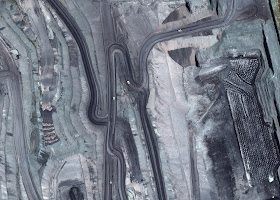Several of us had the pleasure of meeting Kim Hays at Bouchercon in San Diego and hearing about her intriguing series set in Bern, Switzerland. She moved to Bern thirty-five years ago when she married a Swiss; by then, she’d also lived in the US, San Juan, Vancouver, and Stockholm. Pesticide (2022), her first police procedural featuring Swiss detectives Linder and Donatelli, was shortlisted for a CWA Debut Dagger and a 2023 Silver Falchion for Best Mystery.
Bestselling author Julia Spencer-Fleming called Sons and Brothers (2023), the second book in the Polizei Bern series, “a must-read”, and Kirkus said it was, "A smart procedural that keeps its mystery ticking." The third book, A Fondness for Truth, will be out next year and already can be pre-ordered.
In today's guest blog Kim tells us about a less savory part of Swiss history and how it links to the backstory of Sons and Brothers.
I write police procedurals set in Bern, Switzerland, where I’ve lived with my Swiss husband for over 35 years. Our apartment is a ten-minute walk from the bridge across the Aare River that takes us to the city's medieval center. On clear days, I can see the Bernese Alps spread out in a glorious panorama from the other side of the bridge.No matter how much I love Bern, it’s an odd
place to set murder mysteries. That’s because of Switzerland’s homicide rate. In
2021, only 42 “intentional killings” took place in this country of 8.8 million
people, representing a rate of 0.5 cases of homicide per 100,000 residents. The United States, by contrast, had
a 6.81 per 100,00 homicide rate, almost 14 times higher than Switzerland’s. The rates in France and the United Kingdom
are double Switzerland’s, while Finland's is three times higher.
 |
| Bern's old city and the Aare River |
Still, what enthusiastic mystery writer would let something like murder statistics stop her? After all, the crime rate in Three Pines, where Louise Penny’s Inspector Gamache has investigated so many cases, must by now be higher than that of Jamaica (52.1 per 100,000).

Glencore's Hail Creek coal mine
Glencore is a Swiss multinational commodity trading
and mining company
Satellite image 2022
Maxar from Bloomberg

One of Bern's many playgrounds
This is part
of what Switzerland’s wealth buys its residents today—excellent schooling,
medical care, and public transportation, plus safety.

Swiss Papal Guard
Newly
Swissed, May 16, 2016
In Sons
and Brothers, the second book in my Polizei Bern series, I address another
sign of Switzerland’s long years of poverty: the system of contracting young children
to work for farmers. For at least a hundred-and-fifty years, children were
forcibly removed by local officials from their “unfit” parents and placed on
farms as free labor. Many of these parents were single mothers, the children
were sometimes as young as five, and the farmers were often neglectful, cruel, and
even physically and sexually abusive. That this practice went on until 1970 is
a scandal; so is the fact that the terrible plight of these Verdingkinder,
as they are called in Switzerland, wasn’t officially acknowledged until early
in this century.
A
similar system of putting children to work on farms existed in the US from approximately
1870 until 1920, although these American children had no parents and tended to
work for only one season at a time before being sent back to their city orphanages.
By the end of World War I, child labor had come to be seen as wrong, and the
practice ended. In Switzerland, it continued for another fifty years.
Most of Sons
and Brothers takes place today, not in the past, and only a few characters
are former contract children. But parts of the book carry readers back to the early
1960s when youngsters were caught in the system. In Switzerland today, there is
widespread awareness of what Verdingkinder endured; it is easy to find published
interviews in which surviving adults describe years of cold, hunger, neglect,
overwork, and sometimes abuse.

Inspecting a contract child's teeth
Paul Senn, 1940. FFV,
Kunstmuseum Bern
What
comes through most poignantly in these accounts is a terrible loneliness. In
some households, the farming families paid by the state to look after these
children never once called them by their names—or by any name. They were simply
“Boy” or “Girl.” They didn’t eat with the family or sleep in a bedroom, and
they were barely spoken to except to be put to work.
For more information about Kim, her books, and Bern, take a look at Kim's website, www.kimhaysbern.com.






Thank you for this. I had no idea at all. It made me think of the Magdalene Laundries in Ireland that I also only just learned about. It feels like what probably started with genuinely good intentions got horribly warped.
ReplyDeleteHalf of my ancestry comes from Switzerland (near Bern), and as a family historian, have researched quite a bit about the country, but had never stumbled upon this. Shocking, to say the least. Thanks!
ReplyDelete